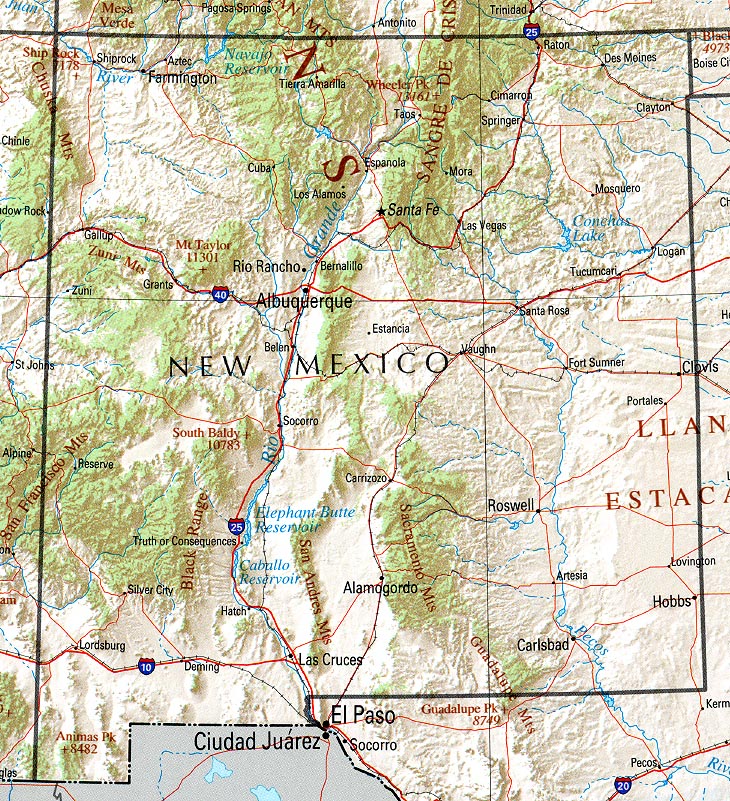The Salinas Pueblos & Missions Ruins are the most southern pueblo ruins in the state. The closest town today to the ruins is Mountainair. They were occupied by communities of Tiwa and Tompiro language-speaking Pueblo people. It is a complex of three Spanish missions. The main park visitor center is in Mountainair. Construction of the missions began in 1622 and was completed in 1635. What remains today are reminders of this earliest contact between Pueblo Indians and Spanish Colonials: the ruins of three mission churches, at Quarai, Abó, and Gran Quivira and the partially excavated pueblo of Las Humanas or, as it is known today, the Gran Quivira pueblo.
Information about the three pueblo ruins:
"Quarai Ruins
The Quarai Ruins are located about 8 miles north of Mountainair, at about 6650 feet (2026 m) above sea level. There is a visitor center and a 0.5 mile (0.8 km) trail through the ruins. In a forest, an interpretive sign reads that when Francis Gardes traveled through the area, he heard birds sing a song called "When Explorers Came". Francis Gardes's trail became Francis Garde National Historic Trail, and it passes through Quarai.
Abó Ruins
The Abo Pueblo community was established in the 11th Century on the edge of the existing pueblo culture, and often attracted roaming Nomadic Tribes of the eastern plains. San Gregorio de Abó Mission (located in Mountainair, New Mexico) was one of three Spanish missions constructed in or near the pueblos of central New Mexico. These missions, built in 1600s, are now a part of the Salinas Pueblo National Monument which includes San Gregorio de Abó Mission, Quarai and Gran Quivera. The mission at Abo was established in 1625 by Fray Francisco Fonte.
Gran Quivira Ruins
The Gran Quivira Ruins are located about 25 miles south of Mountainair, at about 6500 feet (1981 m) above sea level. There is a small visitor center near the parking lot. A 0.5 mile (0.8 km) trail leads through partially excavated pueblo ruins and the ruins of the uncompleted mission church.
The Gran Quivira, as it has been called for over a hundred years, is by far the best known of the Salinas pueblos, and in fact is one of the most celebrated ruins in all of the Southwest. This is not strange, [since] it is altogether the largest ruin of any Christian temple that exists in the United States; and connected with it from the first, there has been the glamor of romance and the strange charm of mystery, which adds tenfold to ordinary interest. How and when it first received its deceptive title of "Gran Quivira" we may never know; there are dozens of traditions and theories and imaginings. From the days of Coronado the name of "Quivira" had been associated with the idea of a great unknown city, of wealth and splendor, situated somewhere on the Eastern Plains; and it is not at all unlikely that when some party from the Rio Grande Valley, in search of game or gold, crossed the mountains and the wilderness lying to the east, and was suddenly amazed by the apparition of a dead city, silent and tenantless, but bearing the evidences of large population, of vast resources, of architectural knowledge, mechanical skill, and wonderful energy, they should have associated with it the stories heard from childhood of the mythical center of riches and power, and called the new-found wonder the Gran Quivira."
